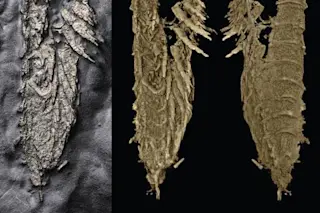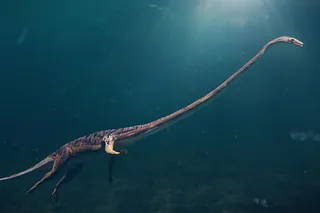Learning that a shiny rock is fool’s gold rather than the valuable mineral is generally cause for disappointment. But for scientists who discovered a new 450-million-year-old arthropod preserved in iron pyrite, the substance could be considered priceless.
Fossils of ancient arthropods — a group of animals including spiders, centipedes, and insects — are especially rare, because they are made up primarily of soft tissue, which usually starts decaying days after death. Due to some rare geochemical good fortune, the newly discovered species Lomankus edgecombei did not decay. The creatures — distant relatives of contemporary spiders, scorpions, and horseshoe crabs — were preserved in remarkably good shape, according to a report in Current Biology.
“We get an almost complete look at their anatomy,” says Luke Parry, an Earth sciences professor at Oxford University and an author of the paper. “Fossils like this tell us a great deal about what life on ...














